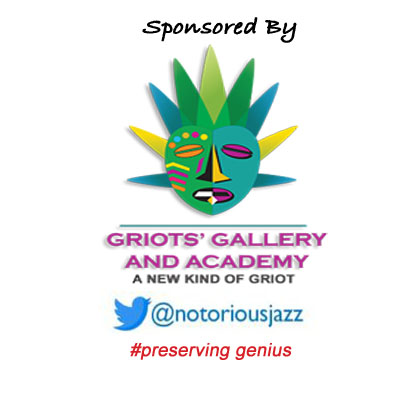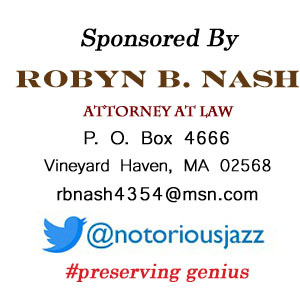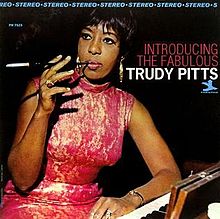
Requisites
Introducing the Fabulous Trudy Pitts is the 1967 debut album that was recorded by the jazz organist and released on the Prestige label. The album is a compendium of mainstream standards and soul jazz covers.
Bill Carney composed thee songs except those indicated: Steppin’ in Minor, The Spanish Flea (Julius Wechter), Music to Watch Girls By (Sid Ramin), Something Wonderful (Oscar Hammerstein II, Richard Rodgers), Take Five (Paul Desmond), It Was a Very Good Year (Ervin Drake), Siete, Night Song (Lee Adams, Charles Strouse), Fiddlin’ and Matchmaker, Matchmaker (Jerry Bock, Sheldon Harnick).
The personnel included Trudy Pitts on organ and vocals, guitarist Pat Martino, drummer Bill Carney and Carmell Johnson on congas.
More Posts: choice,classic,collectible,collector,history,instrumental,jazz,music,organ

Daily Dose Of Jazz…
Rebecca Coupe Franks was born on November 27, 1961 in San Jose, California. It was natural that she started playing trumpet when she was ten, as her brother, mother, grandfather, and great uncle all were trumpeters.
A professional by the time she was 15, Rebecca moved to New York City saw her attending New York University from 1990 to 1991 and practicing on the roof of the music building overlooking Lower Manhattan.
In the early 1990’s, she made a strong impression with her two albums for the Justice label. Her 1992 release Suit of Armor included appearances by saxophonist Joe Henderson, pianist Kenny Barron and bassist Buster Williams. During the 2000s she self-released several records, including Exhibition: Tribute to Joe Henderson.
Trumpeter Rebecca Coupe Franks continues to compose, record, perform and tour with her Groovemobile, which is a five piece band playing a mix of r&b, jazz and soul.
More Posts: trumpet
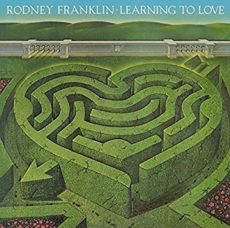
Daily Dose Of Jazz…
Rodney Franklin was born on September 16, 1958 in Berkeley, California and at the age of six he took jazz piano lessons at Washington Elementary School. He was taught by Dr Herb Wong who was a jazz journalist, disc jockey and music teacher.
Influenced by McCoy Tyner, George Duke, Chick Corea and Lonnie Liston Smith he would develop his own sound. Franklin worked with John Handy in San Francisco, California as well as Bill Summers, Freddie Hubbard and Marlena Shaw. He recorded his debut album in 1978 In The Center on the CBS label at age of 20.
1980 saw the release of the album You’ll Never Know which garnered some major chart success and additional six albums were albums were recorded for CBS during the Eighties and worked with bassist Stanley Clarke. Though Rodney gained some notoriety in the United States he was much more popular in the United Kingdom.
Moving to the BMG record label in 1988 he recorded Diamond Inside Of You, introducing vocals by Jennifer Holliday, who would go on to find fame on Broadway in Dreamgirls. By the Nineties he produced and released one album on the Nova label, however, pianist Rodney Franklin continues to composer and work in various music genres in and out of jazz.
More Posts: piano
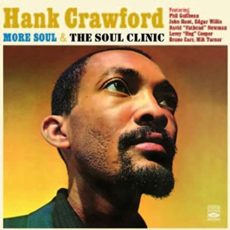
Daily Dose Of Jazz…
Leroy “Hog” Cooper was born on August 31, 1928 in Dallas, Texas and started his career touring with Ernie Fields’ territory band from 1948 to 1951. With his childhood friend David “Fathead” Newman, the two played together in 1954 in the saxophone section backing Lowell Fulson on his first single Reconsider Baby for Chess Records.
In 1957, Newman recommended Cooper to Ray Charles who joined the band the same summer as bassist Edgar Willis, both musicians staying on with Charles for some twenty years. He also played, recorded or toured with Lightnin’ Hopkins, Clarence “Gatemouth” Brown, The Righteous Brothers, Dr. John, Del Shannon, Joe Cocker and Bobby Short..
Leroy recorded not only with Ray Charles but also with Newman, Hank Crawford, Curtis Amy, Kenny Neal, Noble “Thin Man” Watts and Nat Adderley. Moving to Orlando, Florida baritone saxophonist Leroy Cooper performed locally in Orlando till he passed away on January 15, 2009 with the Smokin’ Torpedoes & Josh Miller Blues Band.
More Posts: saxophone
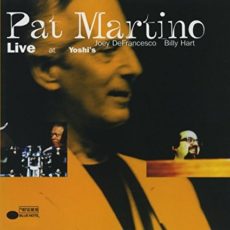
Daily Dose Of Jazz…
Pat Martino was born Pat Azzara in South Philadelphia, Pennsylvania on August 25, 1944 and began playing professionally at the age of 15 after moving to New York City. He resided with Les Paul for a while before moving into a suite in the President Hotel on 48th Street. He started playing jazz clubs like Smalls Paradise and would play at Smalls for six months of the year and then in the summer play at Club Harlem in Atlantic City.
Early in his career Martino played and recorded with Lloyd Price, Willis Jackson, Eric Kloss, Charles Earland, Richard “Groove” Holmes, Jack McDuff, Don Patterson, Trudy Pitts, Jimmy Smith, Gene Ludwig, Bobby Pierce and Joey DeFrancesco.
He has been awarded Guitar Player of the Year in Down Beat Reader’s Poll in 2004, NARAS Songs from the Heart Award, been nominated for a Grammy for Best Jazz Instrumental Album, Live at Yoshi’s, and Best Jazz Instrumental Solo on ‘All Blues‘ and has received Philadelphia Alliance Walk of Fame Award and National Academy of Recording Arts & Sciences “2nd Annual Heroes Award among others.
The list of jazz musicians he has performed and recorded as a sideman with are John Handy, Jimmy Heath, Charles McPherson, Sonny Stitt, The Philadelphia Experiment as well as released three-dozen albums as a leader. Guitarist and composer Pat Martino, noted for his mathematical approach to the instrument and plays in the post-bop, fusion, mainstream and soul jazz idioms, continues to perform and tour.
More Posts: guitar



